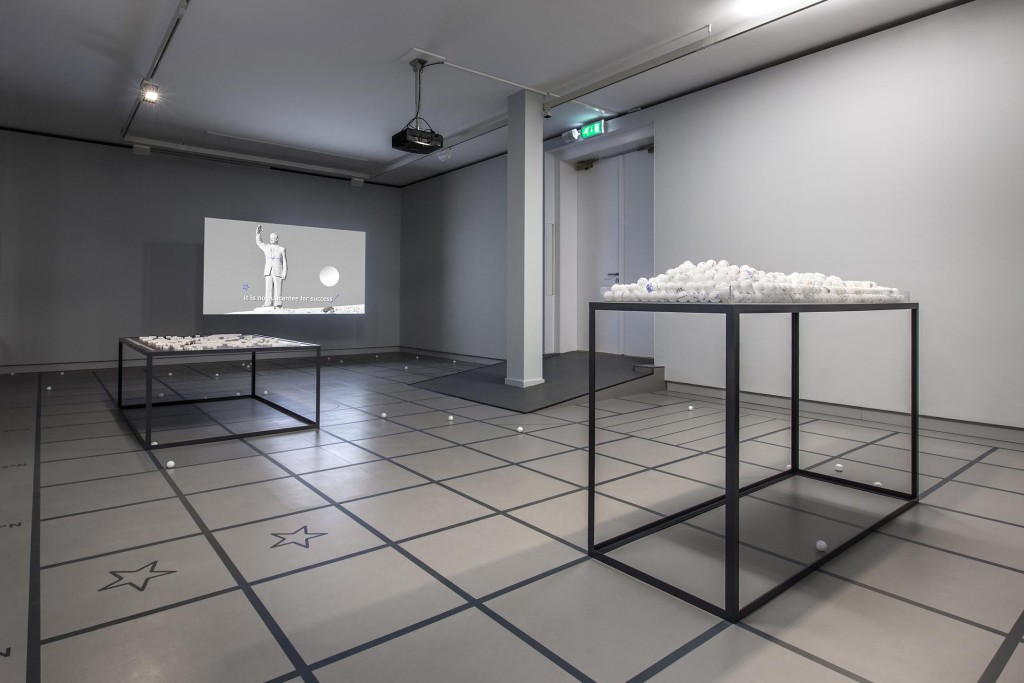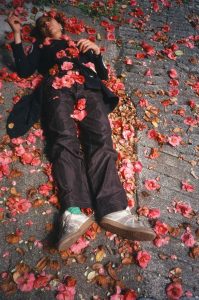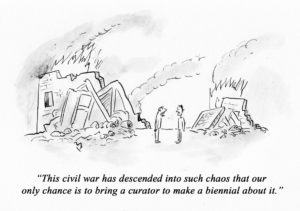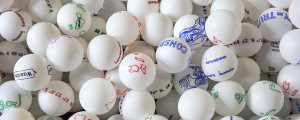A shallow vat of ping-pong balls stands to the back of de Appel Arts Centre, each decorated with an assortment of coloured tokens: “CONSPIRACY = TRUTH”, “PAST = FUTURE”, territorial outlines, arabic text, coordinates, “where are you?”. It is watchfully circumnavigated by a handful of attendees, who maintain an arm’s-length relationship with the artwork. Others in attendance quickly snatch and clutch, forcibly seizing possession of the round objects —primarily an ode to a 2011 protest, when ping-pong balls written with the word “freedom” in Arabic were spread down hills in Damascus.
The installation, ‘Extended Borders’ (2015), is part of Foundland’s Failed Futures & Extended Borders exhibition, which is nominated for the 2015 Prix De Rome prize for visual arts. Foundland is the collective duo of Lauren Alexander and Ghalia Elsrabki. As part of their focus on political changes in the Middle East, the work — comprising a video projection, two installation tables, and a floor drawing —is based on interviews with Ghalia’s father, Yassin Elsrakbi, a Syrian refugee living in Cairo.

The crux of the matter: the balls are up for grabs, literally available to anyone willing to expend the energy. In doing so, the visitor becomes a player, a mechanical device for gripping objects; affecting and causing reactions; arousing the excitement of the pool of spherical shapes as they shuffle and scatter, changing their relative positions. Even still, as ping-pong balls they possess the energetic potential to shift and bounce; to change rapidly and regularly; to move back and forth or transfer from one locale to another.
As they intermittently fall across the floor, the ground on which they scatter is marked by a network of horizontal and perpendicular lines and stars (at once an indication of boundaries, traces of moving points, and overlapping ensigns of nations, states, or organisations) via a system of coordinates. As a visitor, simply navigating the space brings a necessity to align oneself. At the same time, the markings give the impression of a board-game, as checkers or chess, and the realisation of oneself as an implicate piece, moving from one section to another. In actual fact, the markings are derived from Syrian Flag proposals between 1916-2015, while the coordinates span those of the entirety of Egypt and Syria.

Meanwhile, a board of itemised, broken-edged pieces —each sector representing a possible country division, e.g., Kurdish, Other Rebel, Syrian Government, Al Nusra, and Islamic State —is displayed like a jigsaw puzzle. Echoed on a video, ‘Scenarios for Failed Futures’ (2015), at the forefront of the space, the pieces allude to a game of strategy. Indeed, the video, which outlines a series of conspiracy theories, proposes “an inevitable shift in strategy of the great powers will occur” for Syria. The shift is central to Failed Futures & Extended Borders, portrayed in the energy of ping-pong balls, landmasses, and strategic powers. In every respect, “transformation creates a voice for a variety of new, future scenarios and players to appear on the world stage”. **


